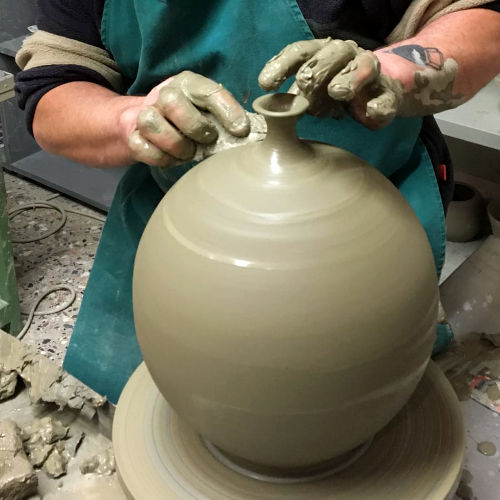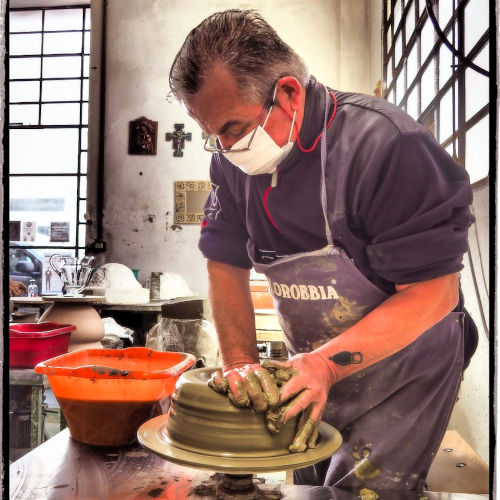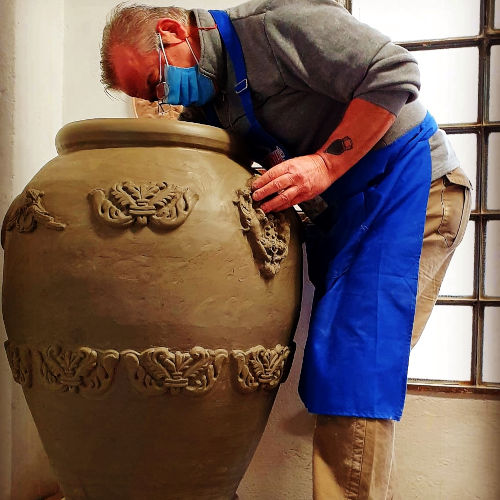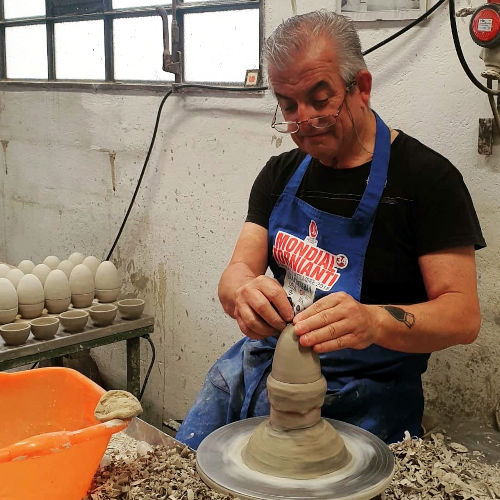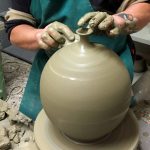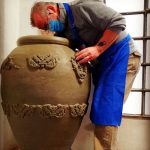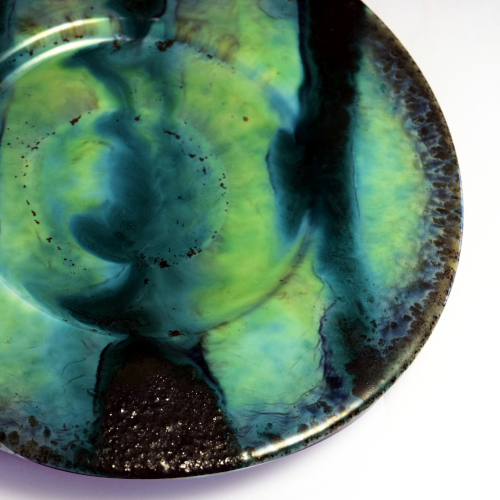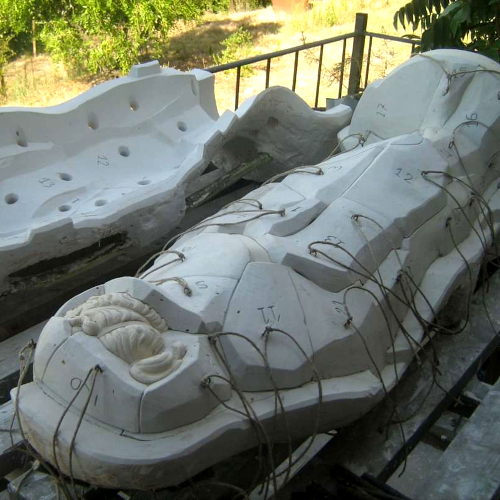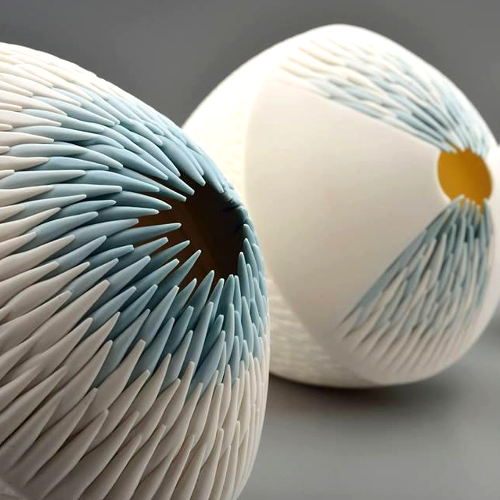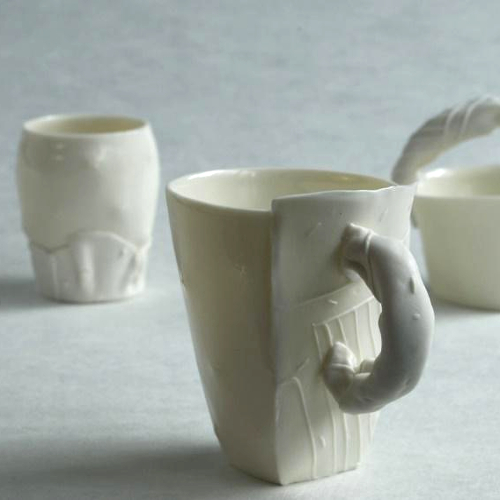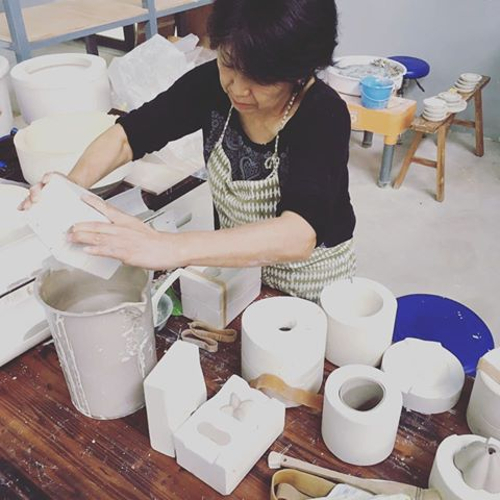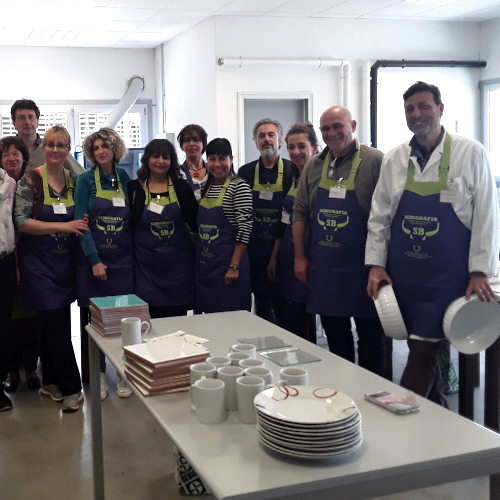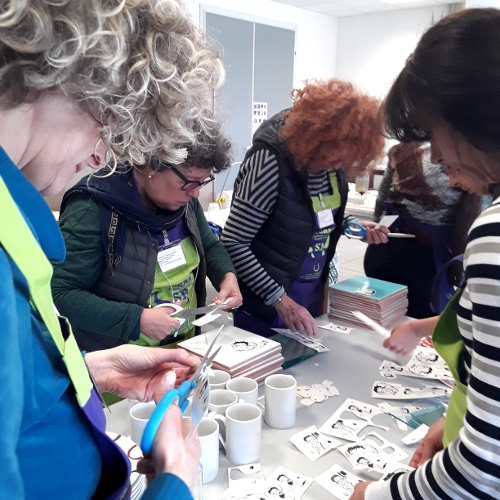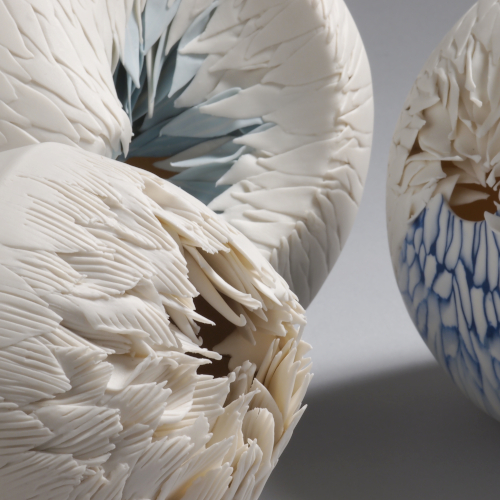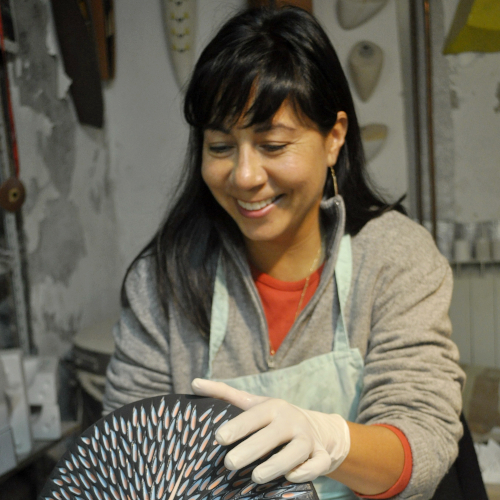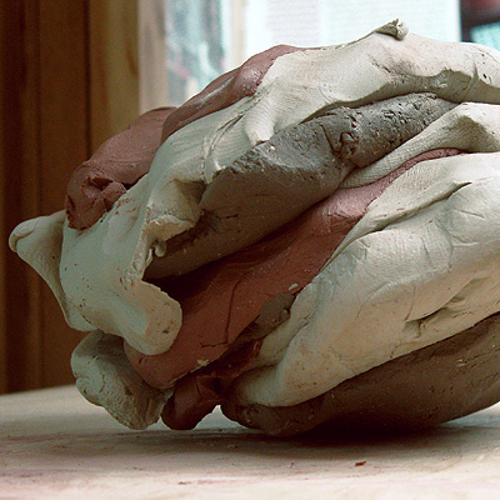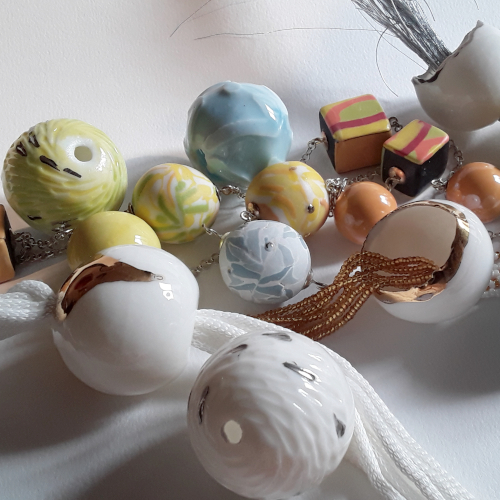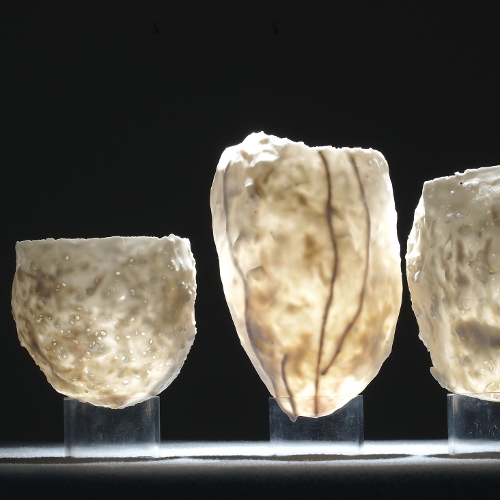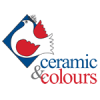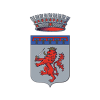BASIC TECHNIQUES OF THROWING | Roberto Reali
26-30 June and 01-02 July 2023
Intensive course on throwing | Maximum 5 participants.
Working on wheel is an art that requires time, perseverance and a small group. This basic course, thanks to the experience of Roberto Reali (wheel potter in Faenza for over 50 years), will deal with the main techniques for starting to work on the wheel such as: centring, the cylinder and then the first forms derived from the cylinder such as the bowl, the vase, the cup and the jug.
We have deliberately not specified a programme divided into days because the course is structured as a marathon linked to the repetition of gestures and techniques essential for entering the world of throwing.
Course times:
Daily | 9.00 – 12.00 and 14.00 – 17.00 (6 hours per day);
The course starts at 9 a.m. on Monday 26/06 and ends at 5 p.m. on Sunday 02/07.
Included in the Workshop cost:
42 hours of teaching | all the necessary materials | perfectly equipped studio
Teacher: Roberto Reali
Download the full program in pdf
To confirm your inscription you have to make a bank transfer of a deposit or the total amount.
Related products
Discovering Porcelain 2
6, 7 and 8 July 2018
PORCELAIN is a material that requires a prolonged, precise and very accurate processing to obtain pieces of exquisite beauty. The different techniques faced with this material allow us to highlight two important qualities, TRANSPARENCY and SMOTHY to the touch.
This course allows you to develop simple basic techniques, all tricks to avoid cracks, breakages, deformations, the secrets to recover a broken piece, the knowledge of the correct drying and the different firing curves.
We would use body and slip porcelain with and without the use of single and double-fired molds. The purpose is to ENHANCE CREATIVITY WITH THE RIGHT KNOWLEDGE OF ALL RESOURCES IN THE FIELD OF PORCELAIN AND ITS QUALITY OF TRANSPARENCY AND WITHOUT GOING CRAZY!
Program: - Fully practical lessons with a theoretical chapter for basic technology: - Preparation of the slip and body porcelain recipe and percentages. - Slip casting porcelain methods with and without molds. - Methods of achieving transparency. - Method of constructions with slabs or small fragments. - Precautions in drying, firing and finishing. - How to obtain smooth surfaces. - How to glaze with simple means. - How to recover broken or craked pieces. - Firing curves and how to place fragile pieces in the kiln, use of alumina. - Corrections after biscuit and finishing after last firing. The 20-hour workshop lasts from 9.00 to 17.00 on Friday and Saturday and from 9.00 to 16.00 on Sunday. Teacher: Martha Pachon Languages: English, Italian, French, Spanish Download the application form in pdf Download the program in pdfThe sophistication of japanese slip porcelain with Kazuko Uga
12, 13 e 14 Ottobre 2018
Silk-screen printing Workshop
12, 13 and 14 May 2017
Questo corso ha lo scopo di fornire le conoscenze necessarie per creare le proprie decalcomanie vetrificabili e stamparle su diversi supporti ceramici o vetrosi. Inoltre attraverso la stampa grafica su ceramica, il corsista sarà introdotto a un campo poco esplorato, il vincolo dell’immagine ceramica con la lettura virtuale incorporando i codici QR. Questi codici offrono l’opportunità di reindirizzare la ceramica sul concetto di un progetto web (un blog, una pagina, una libreria virtuale, un videogioco, ecc.)Il corsista sarà introdotto nella pratica della elaborazione di una matrice, l’incisione in seta, la pulizia e il recupero dei telai, l’applicazione delle decalcomanie, l’uso di diversi supporti, la preparazione degli smalti e delle cotture. Sarà inoltre in grado di installare il proprio laboratorio di serigrafia con i più bassi costi possibili di attrezzature e risparmio dello spazio.
BIOGRAFIA SILVIA BARRIOSArtista e ricercatrice nata in Argentina. Si è specializzata nel campo dei nuovi media e delle tecnologie interattive applicate sulle arti del fuoco.Il suo tema di interesse attuale la “Ceramica Intelligente” deriva degli incontri fra la Serigrafia Ceramica e i processi creativi dei multimedia incentrati sulla bio-arte, l’elettronica, l’intelligenza artificiale e le arti digitali unitamente alle culture popolari sudamericane.Silvia Barrios è stata invitata con i suoi laboratori e istallazioni alla Biennale della Havana, la Biennale di SaoPaulo, e la Biennale di Mercosur, Buenos Aires. Ha realizzato diversi progetti internazionali, e ha esposto indiversi nazioni, fra loro, Cina, Italia, Spagna, Portogallo, Cuba, Argentina, Colombia, Ecuador e Perù.
Programma: Lezioni pratiche e teoriche finalizzate allo sviluppo della impressione di una immagine fotografica su un sopporto ceramico terroso o vitreo, crudo, biscottato o smaltato e anche sul vetro. Elaborazione della matrice, trattamento della seta per l’incisione. Pulizia e recupero dei telai. Applicazione delle decalcomanie. Uso dei diversi supporti: terracotta, terraglia, gres, porcellana, vetro. Preparazione degli smalti per serigrafia. Cotture a diversi ambienti. Come istallare il proprio laboratorio di serigrafia. Introduzione del codice QR alla serigrafia. Conferenza audiovisiva – Riassunto del processo per consolidare le conoscenze – Test e valutazione dei risultati Riflessioni sulla introduzione dei codici multi mediatici e la progettazione sul campo della ceramica contemporanea – Panorama dei progetti innovatori della ceramica nel campo della elettronica, intelligenza artificiale, bioscienza e robotica. Conclusioni con una mostra di un progetto artistico di gruppo dei corsisti.
Le forme saranno realizzate seguendo le indicazioni del docente, saranno cotte e consegnate entro i tempi del corso stesso. Il corso di 20 ore dura dalle ore 9.00 alle ore 17:00 del venerdì, dalle 9.00 alle ore 17:00 del sabato e dalle ore 9:00 alle ore 16.00 della domenica. Docente: Silvia BarriosDYNAMIC PORCELAIN | Martha Pachon
12-13-14 April 2019
Inspired by the new developments of contemporary ceramics, both utilitarian and decorative, sculptural or any application that can be made of this precious material, this course is structured as a laboratory of "multiprocesses" to know and master the basic techniques of slip and body porcelain. Understanding porcelain in a practical, direct, easy and fast way will be the goal of this course. Participants will have at their disposal different techniques, some simple and other complex, with and without the use of molds, with the possibility of glazing also in single firing, with theoretical chapter dedicated in detail to all the questions regarding porcelain: drying, breakage, deformation, firing curves, etc.
THE PARTICIPANTS, BEYOND TO BRING HIS FINISHED WORKS TO HOME, WILL HAVE THE RIGHT KNOWLEDGE OF ALL THE RESOURCES IN THE FIELD OF THE PORCELAIN: ITS QUALITY OF TRANSPARENCY, RESISTANCE, REFINEMENT AND WITHOUT GOING CRAZY!
The 20-hour workshop lasts from 9.00 to 17.00 on Friday and Saturday and from 9.00 to 16.00 on Sunday.
Included in the Workshop cost: 20 hours of teaching | all the necessary materials | firings | nr. 3 brunch lunch | a box with the samples of the materials used during the workshopTeacher: Martha Pachon Languages: English, Italian, French, Spanish
Download the full program in pdfTo confirm your inscription you have to make a bank transfer of a deposit or the total amount.
Ceramic maze: the clays
27 and 28 January 2018
Fare ceramica è una delle arti più affascinanti, ma occorre avere ben chiare alcune regole e metodologie perchè l’autodidattica è un approccio possibile, ma si può perdere tempo e danaro.
La scelta del tipo di argilla da impiegare nella produzione delle forme è di basilareimportanza e da questa dipendono tutte le altre come la foggiatura, gli smalti e la temperatura ottimale di cottura. Si può scegliere a monte quale metodologia impiegare, ma questo non toglie che la conoscenza delle argille e quindi il loro carattere è assolutamente fondamentale.
Durante il corso avrete l’opportunità di toccare una vasta gamma di argille da cui poter far discendere le vostre scelte future. Il corso si limita quindi alla produzione in libertà di esperienze costruttive, tattili e di cottura sempre sotto la guida del docente.
PROGRAMMA: esercizi personali con vari tipi di argilla con e senza inerti sia per bassa che alta temperatura a colombino, lastra e a stampo – finiture possibili durante le varie fasi di asciugatura – ritiri e plasticità – la deformazione delle forme e il suo controllo – Cottura di alcune esperienze a bassa ad alta temperatura. Lezioni di tecnologia ceramica -dimostrazione di foggiatura a colaggio.
Le forme saranno realizzate seguendo le indicazioni del docente, saranno cotte e consegnate entro i tempi del corso stesso. Il corso di 14 ore inizia alle ore 9.00 del sabato e termina alle ore 16.00 della domenica. Docente: Maestro Giovanni CimattiTHE PEARL, FROM THE BEGINNING TO THE END | Martha Pachon
6-7-8 September 2019
A complex and complete course to make the artist independent of creating large and small series of pearls for jewelery in various shapes, sizes and decorations. Making of molds, testing of slip and body porcelain, firing and decoration. The italian mold expert Florio Bedeschi, will be in charge of the first part of the course for the execution of complex but practical molds for pearls of different shapes and sizes.
A second part related to the use of the mold with the slip and body porcelain, how to firing and diferent kinds of decoration, will be with Martha Pachón Rodríguez.
The 20-hour workshop lasts from 9.00 to 17.00 on Friday and Saturday and from 9.00 to 16.00 on Sunday.
Included in the Workshop cost: 20 hours of teaching | all the necessary materials | firings | nr. 3 brunch lunch | a box with the samples of the materials used during the workshopTeachers: Martha Pachon and Florio Bedeschi Languages: English, Italian, French, Spanish
Download the full program in pdf
To confirm your inscription you have to make a bank transfer of a deposit or the total amount.
Jewelery in Porcelain
11-12 November 2017
Corso di costruzione di gioielli con le tecniche antiche asiatiche multicolore fino alla sua presentazione finale. Sviluppo ed approfondimento delle tecniche della famiglia del “Neriage” e applicazione in un progetto definitivo per un gioiello. Metodi per preparare gli impasti colorati, processi delle tecniche con metodi di conformazione a stampo, essiccamento, cotture, correzioni di crepe, rotture e deformazione. Montaggio delle diverse alternative e materiali di uso facile e immediato. Agli allievi verranno fornite le parti metalliche e in argento per montare un gioiello completo.
PROGRAMMA: Lezioni totalmente pratiche con un capitolo teorico per tecnologia – riparazione della porcellana ad impasto e barbotine colorate, ricetta e percentuali – creazione dei motivi organici, geometrici o astratti direttamente nello impasto traverso: -Metodi di composizione a blocco, rotolo e forme colorate dell’Arcobaleno – Metodi di costruzione de tasselli composti,uso delle barbotine colorate – Come applicare su stampi evitando crepe e deformazioni – Rifinizione e correzioni dopo cottura biscotto – Metodi di “estivazione” dei pezzi per cottura di alta. Particolarità per evitare deformazioni e rotture -Rifinizione e correzioni dopo ultima cottura.
Cottura (il sabato sera): biscotto, solo dei pezzi realizzati il medesimo giorno ed essiccati, sabato cottura de alta 1250°C, quelli della domenica non saranno cotti, ma è sufficiente per capire la tecnica. Nota: i materiali utilizzati per infornare i pezzi sono soltanto per dimostrazione e cottura Il corso di 14 ore inizia alle ore 9.00 del sabato e termina alle ore 16.00 della domenica. Docente: Martha PachonIMMEDIATE TRANSPARENCIES | Martha Pachon
11-12 May 2019
Transparency is one of the most important qualities of porcelain and usually requires a prolonged, precise and very accurate processing to obtain a piece of fine beauty highlighted by the translucency of the light. This course allows you to develop two simple and immediate techniques that will facilitate and strengthen creativity to develop many projects without the use of large resources and experience in the field of porcelain.
We will use the slip porcelain without the use of molds and single-firing and the two techniques, one for objects with organic shapes and another for objects with geometric shapes and more precise.
The 14-hour workshop lasts from 9.00 to 17.00 on Saturday and from 9.00 to 16.00 on Sunday.
Included in the Workshop cost: 14 hours of teaching | all the necessary materials | firings | nr. 2 brunch lunch | a box with the samples of the materials used during the workshopTeacher: Martha Pachon Languages: English, Italian, French, Spanish
Download the full program in pdf
To confirm your inscription you have to make a bank transfer of a deposit or the total amount.

